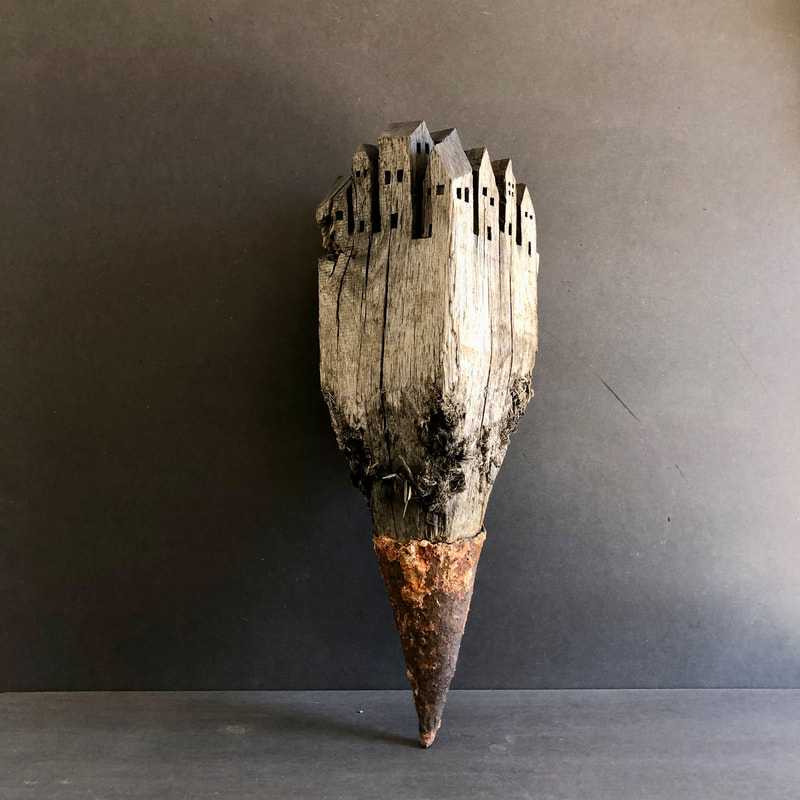With a keen eye for the art hidden in everyday things, Hans Panschar explores the essence of humankind through the creation of tactile objects |
an article written by Nora Benz
Since his childhood, German contemporary artist and sculptor Hans Panschar (b. 1962) has been involved in the making of handcrafted carved objects. What started with building boats turned into crafting furniture and developed into making art. Today, Hans Panschar is particularly known for his carved objects and sculptures that are usually accompanied by a thoroughly thought through title. In the earlier days of his artistic journey, Italien artist Alberto Burri, who is associated with the matterism of the European informal art movement and whose style is often described as polymaterialistic, had a lasting impression on Panschar. Similarly, Spanish Basque sculptor Eduardo Chillida, who is notable for his monumental abstract works, influenced Panschar. Today, however, Panschar does not pay much attention to other artists as seeing too much art leaves him feeling empty and unable to work, as he describes. Generating his artistic drive from deep inside, Panschar is strongly dedicated to craftsmanship and the love for telling his own story with things and materials. As a tactile contact is crucial for his working process, Panschar primarily works with wood, concrete and iron. Ships, chairs, houses or entire cities are thereby reoccurring shapes and objects. Panschar’s creations are usually pre-thought and often one idea emerges from another. Sometimes an idea appears out of nothing, other times he daydreams or even dreams about a sculpture. However, there are no fixed rules and Panschar’s work evolves in a rather dynamic way. Deciding which idea to implement is then one of the biggest challenges: ’Art is long, life is short!’ as the artist likes to say.
Even though not a single body sculpture, bust or human figure can be found in his atelier, the exploration of mankind is the underlying theme of Hans Panschar’s work. Yet, instead of capturing the essence of man by depicting humans itself, Panschar explores mankind through the things man crafts and creates, uses and needs to be part of this world. Thus, dwellings, everyday objects like chairs and tables or tools like knives, forks, spoons and books are the main subjects of his body of work.
Besides a keen eye for the art hidden in everyday things it is also Panschar’s fine sense for language and the meaning of words that make him the successful artist and sculptor he is today. It is often only the title that reveals the double meaning of a sculpture and makes it a verse turned figure. This ability to appreciate and respond to language coupled with a big portion of talent as well as courage, experience, passion and skill enables him to create meaningful and captivating pieces of art. |
SUPPORTARTICULATE
www.articulate.nu SUPPORT Monday - Friday 8:00 - 16:00 [email protected] +45 30 48 19 81 Head Quarters VAT DK40953191 |
|









